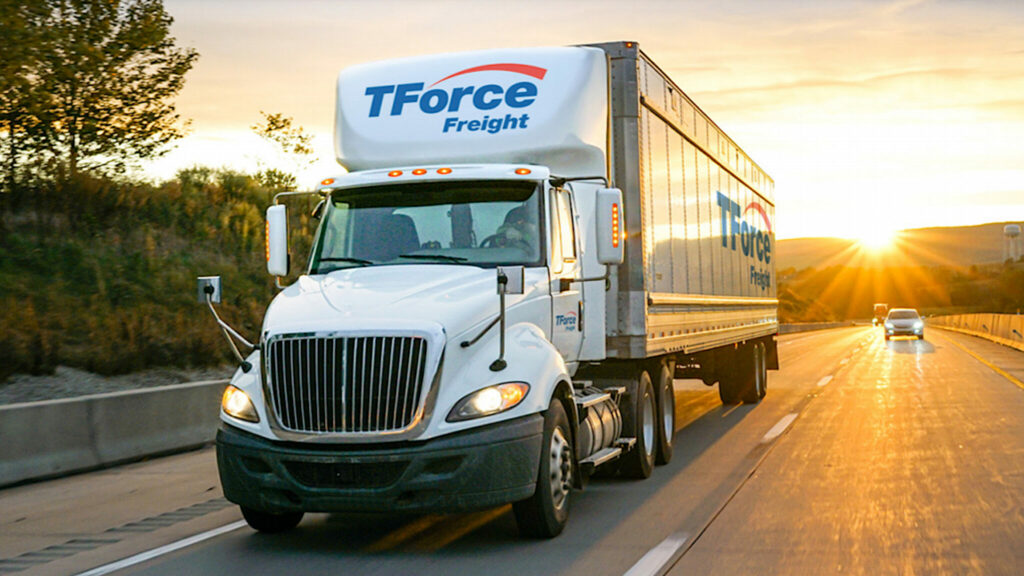TFI soars to record revenues, despite challenges getting trucks and drivers
TFI International saw revenue and profits surge in a record third quarter, as it began to see benefits from its major acquisition of UPS Freight.
Net income grew 60% to $132.8 million (all figures U.S.), while total revenue surged 124% to $2.09 billion ($1.87 billion net of fuel surcharges). The package and courier segment grew revenue 9%, LTL revenue jumped 547%, truckload was up 19%, and logistics revenue jumped 94%.
“I’m particularly pleased that our strong performance comes at a time when the most compelling benefits from our pivotal acquisition of UPS Freight are still ahead, and yet firmly within grasp as the newly branded TForce Freight continues to exceed expectations under the TFI umbrella,” said Alain Bedard, chairman, president and CEO.

Revenue benefited from the acquisition of UPS Freight, rebranded TForce Freight, which Bedard dubbed “The diamond in the rough of the company.”
On a conference call with analysts, Bedard said the company has done well “improving the quality of freight” at TForce Freight, but that more needs to be done to reduce costs. “We have significant remaining upside from this recent acquisition,” he said.
UPS Freight ran at an operating ratio (OR) of about 97, which TFI International has improved to 91 in the third quarter. However, Bedard noted the division is usually weak in the fourth and first quarters, so it’s not yet a 91 OR company.
The company will shut down four U.S. terminals of about 225 in December due to low volumes and high fixed costs.
“We’re not going to run a terminal with 50 bills a day,” he said. “This doesn’t make any sense, it’s too expensive.”
Another goal is to capture more industrial LTL freight and reduce its dependency on retail. Bedard said the ultimate goal is to get TForce Freight to an 85 OR.
Even a mega-fleet like TFI International has had difficulty securing new truck orders due to supply chain disruptions. Bedard said the company wanted 1,100 new trucks for its LTL division but will only receive 500 through the first quarter of next year.
“Maintenance costs are creeping up,” he said, “because we don’t have the equipment we need to bring those costs down.”
The company was hoping to add 3,000 trucks to its U.S. truckload and LTL fleets next year, but has only received commitments from OEMs to provide 2,000. In response, it has turned to other suppliers. An order of 165 trucks that was promised by the end of October didn’t materialize. Bedard voiced his frustration.
“Our approach has been, we have to bring more suppliers in,” he said, noting the company is now sourcing new trucks from additional OEMs. “We got burned a bit by this supplier…he gave us a list of 40 pages of excuses why he can’t deliver. For 2022, we are bringing in three more suppliers.”
Finding drivers also remains an issue within the U.S. truckload business, Bedard said. “It’s very difficult to find quality drivers. The freight is there, our revenue per mile is improving every day. The problem is to find the people.”
Currently, Bedard said the strategy is to hire and train as many drivers as possible in the U.S., where the labor shortage is most severe. In addition, it relies on acquisitions to find drivers.
“Pretty soon you may see us buying a small truckload company in the U.S. just to beef up our team,” he said.
Have your say
This is a moderated forum. Comments will no longer be published unless they are accompanied by a first and last name and a verifiable email address. (Today's Trucking will not publish or share the email address.) Profane language and content deemed to be libelous, racist, or threatening in nature will not be published under any circumstances.